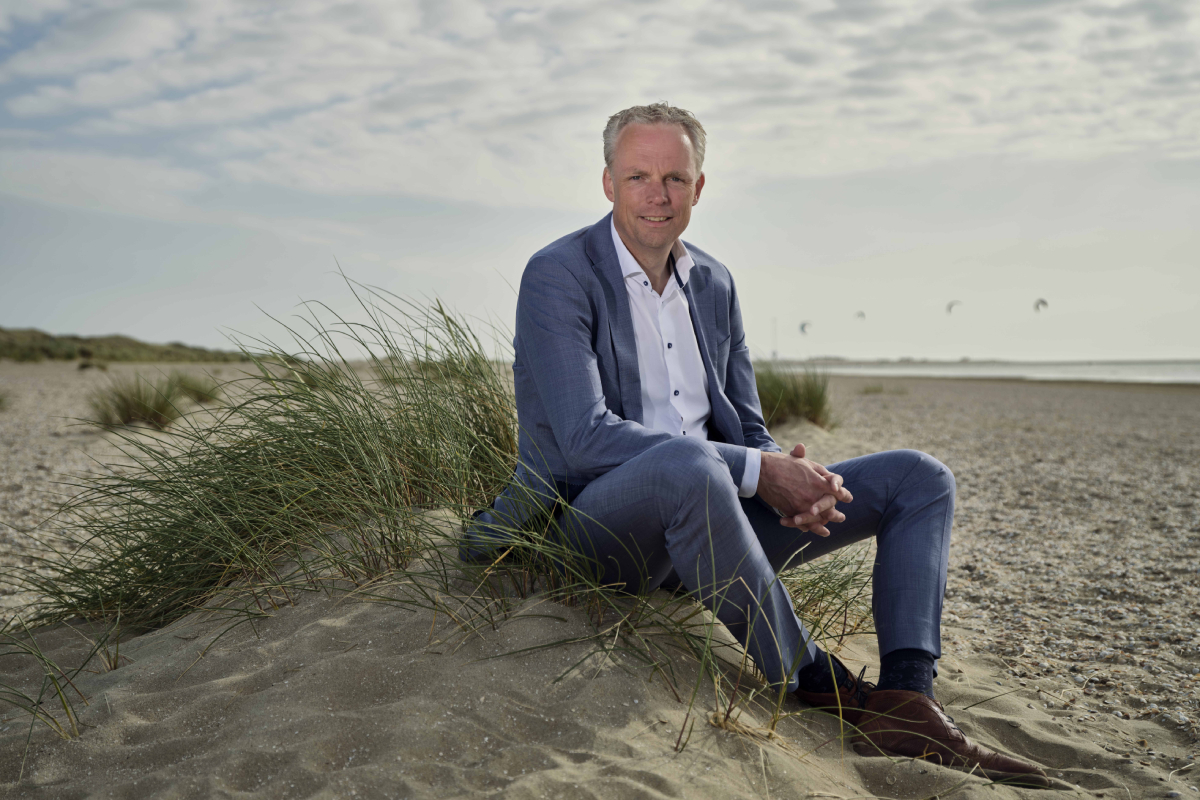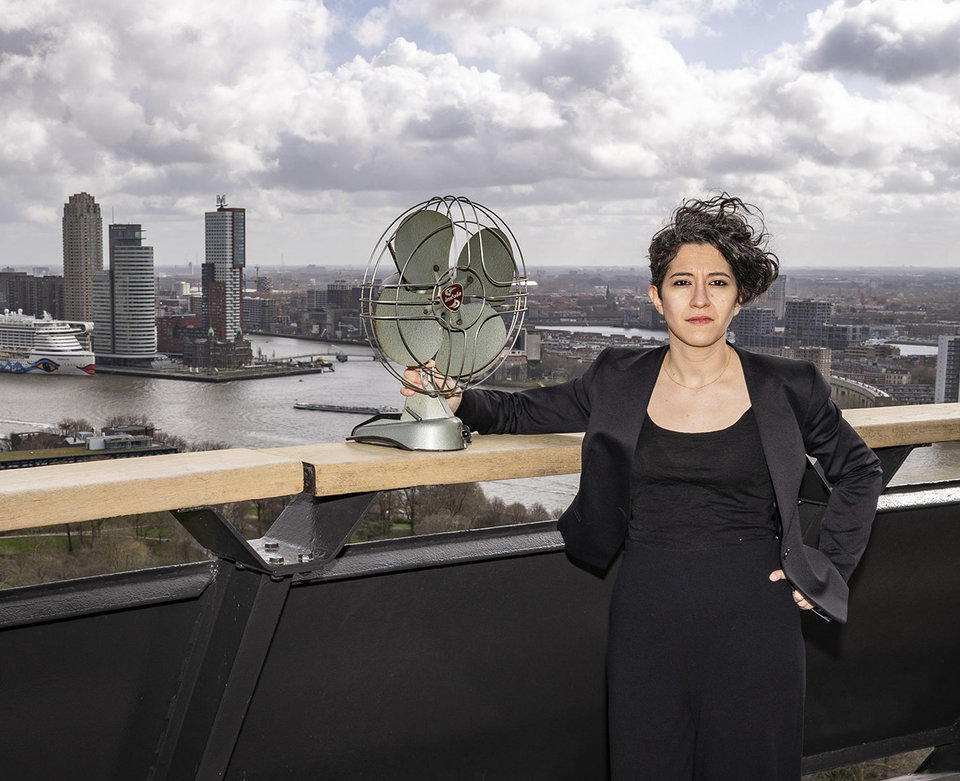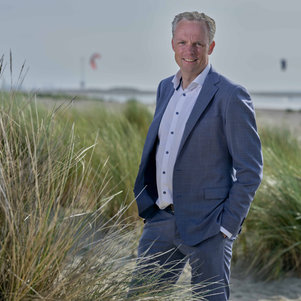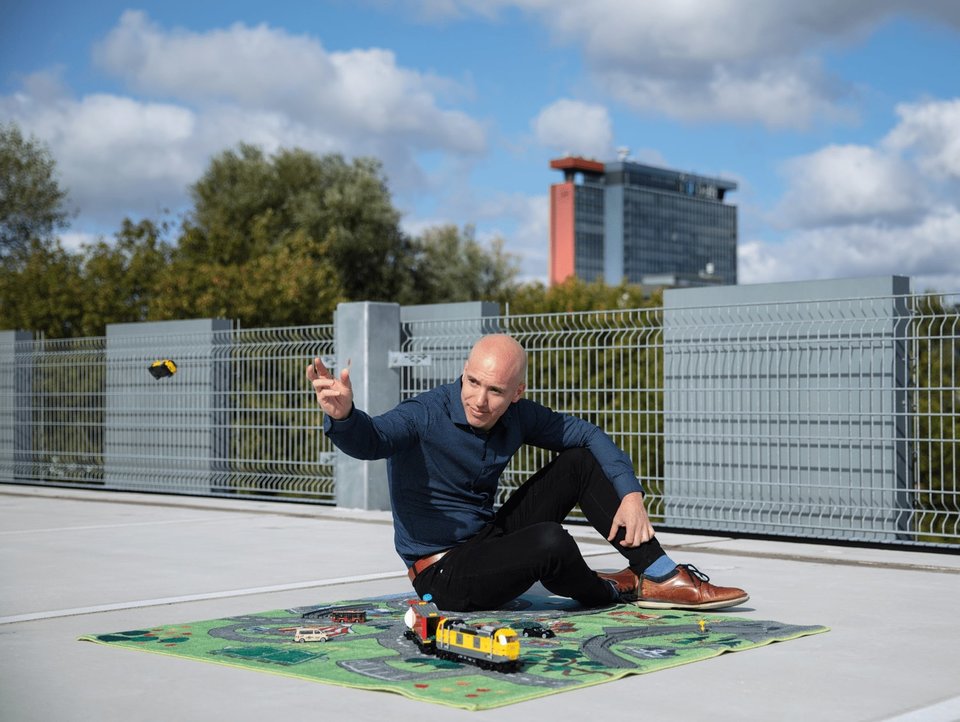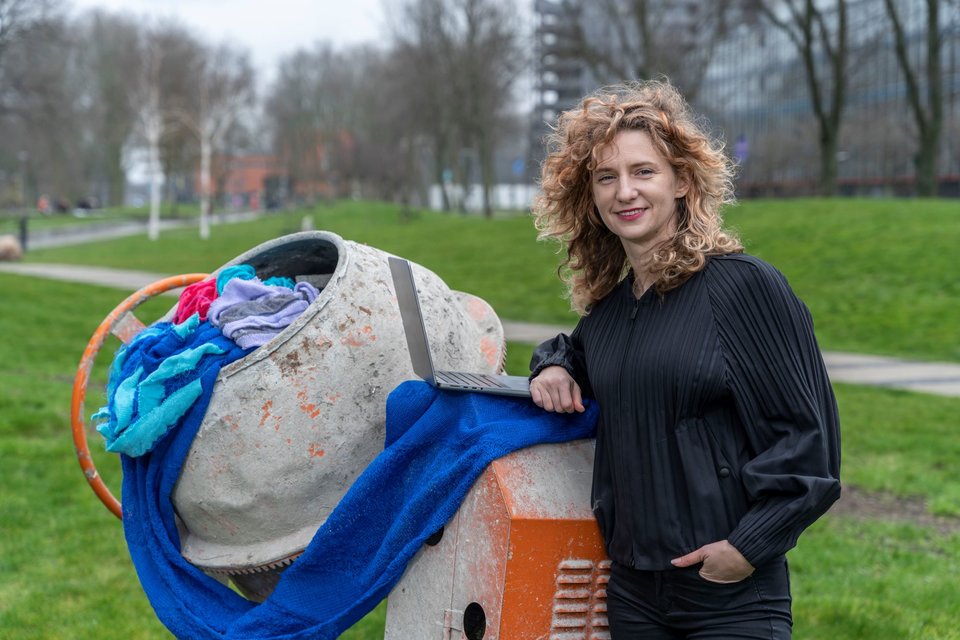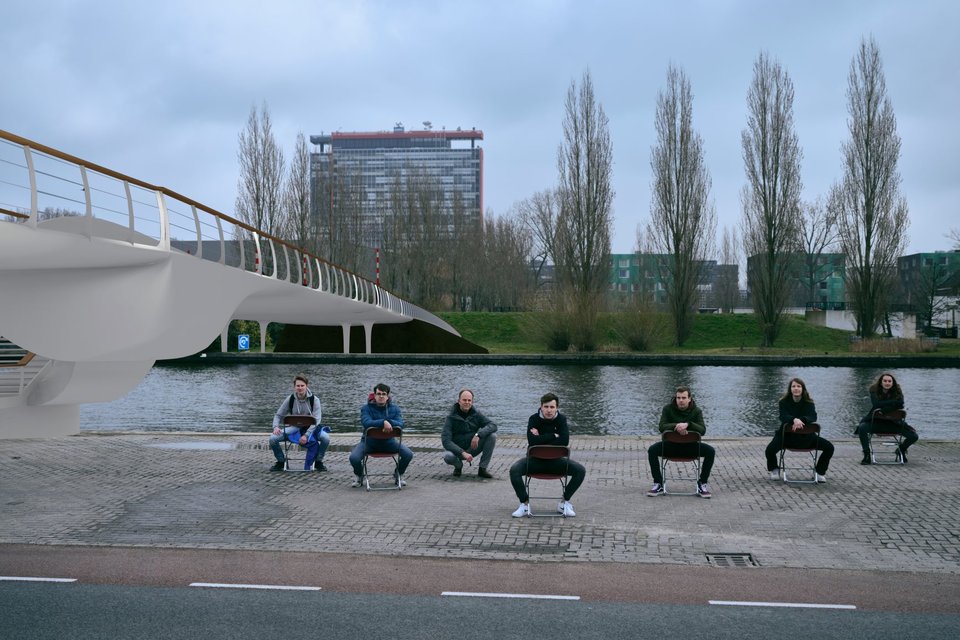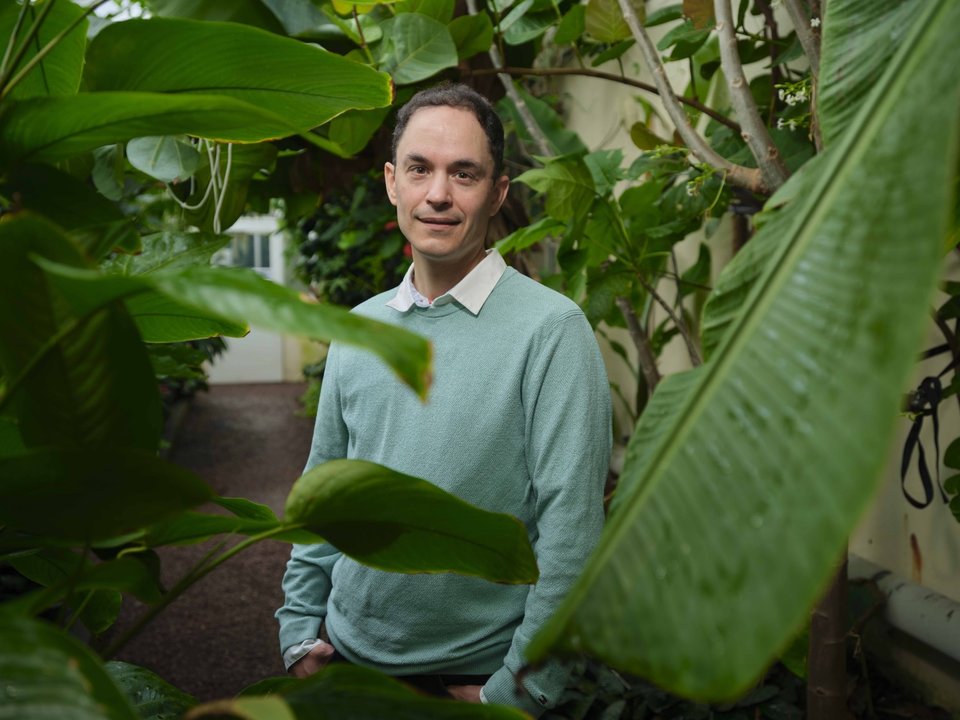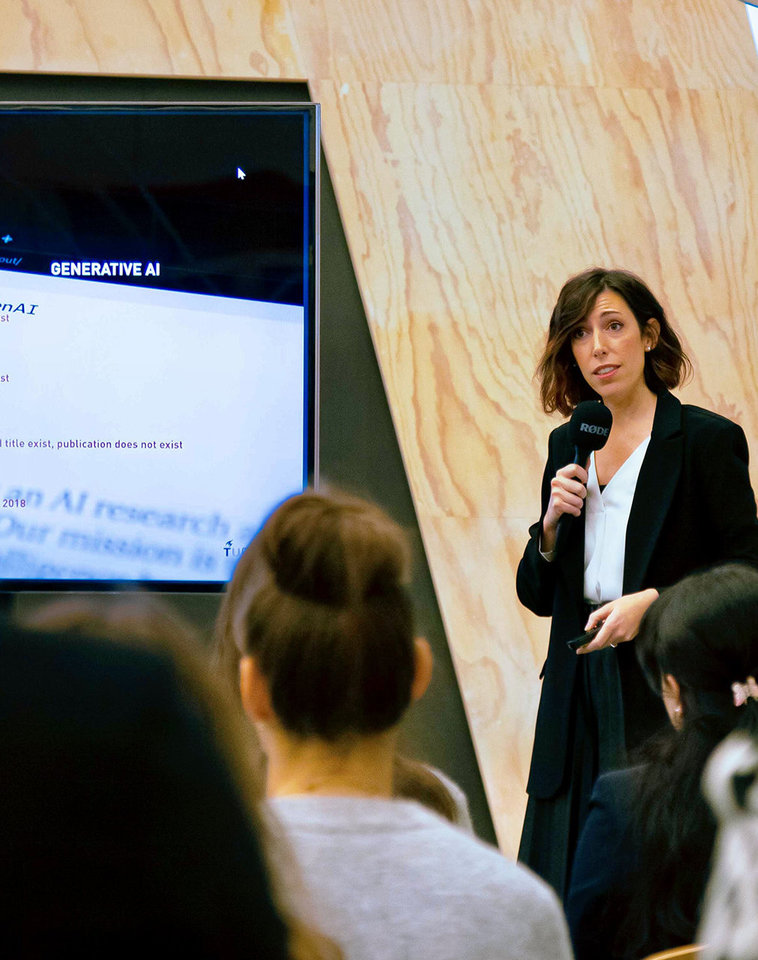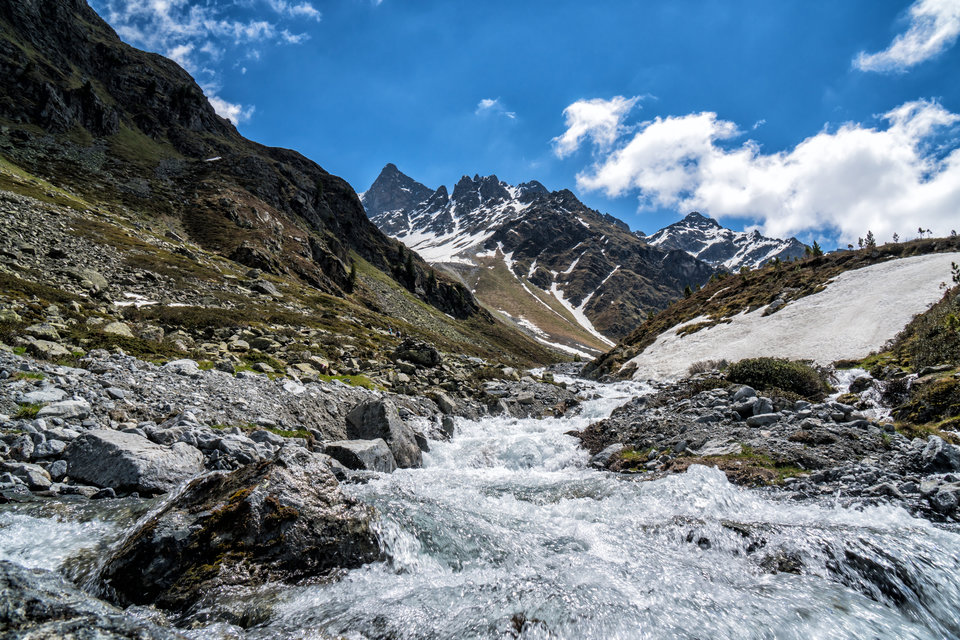It’s a decade since the creation of the Sand Motor, an artificial sand bank off the North Sea coast. What happens to a natural system following human intervention on such a large scale? That question has been the focus of professor of Coastal Engineering Stefan Aarninkhof’s research for the last ten years. The results, he hopes, will pave the way to a full-scale experimental climate lab.
The Sand Motor, a peninsula consisting of 21 million cubic metres of sand off the coast at Kijkduin-Ter Heijde, is a place where coastal safety, the development of the natural landscape and recreation go hand in hand with scientific research, coastal engineer Stefan Aarninkhof says. ‘TU Delft has created an open air lab in its own backyard. The Sand Motor offers unique opportunities to increase our knowledge of coastal processes, such as sand deposition and dune formation. That knowledge is especially relevant in connection with climate change and sea level rise. We need an even better understanding of coastal development if we want to meet the challenges we are being faced with today.’
An icon of natural coastal development
The Sand Motor is a grand and unique project in more ways than one, Aarninkhof says. ‘An unprecedented amount of sand has been used for the sand bank. At the time of construction, it built out the shoreline by one kilometer – enough to strengthen a 20k stretch of coast for the next twenty years. The cooperation between the authorities, businesses and science have turned it into an experiment that has been widely supported. Together we form the so-called Golden Triangle. Put all these elements together and you can safely say the Sand Motor has become an icon of Building with Nature.’
The first expedition
Aarninkhof became fascinated with the coast in the mid-Nineties. Until then he had been a computer-bound student at TU Delft’s hydraulic engineering department. His MSc research on the coast at Noordwijk with scientists from Utrecht and the United States introduced him to the joys of field work. ‘It was a real eye opener, my first real experience of going out and doing practical research. The others were all carrying sophisticated measuring equipment and video cameras. I thought that was fascinating. You need theoretical research to develop models but you need ground-truth data to validate and improve them. Reality has a way of scuppering theoretical assumptions.’
A link between science and practice
In 2006, after completing his PhD research project and a ten-year affiliation with Deltares, Aarninkhof went to work for Boskalis. It was his first encounter with the Sand Motor which was then in the design stage. ‘I thought it would be interesting to experience the development of the project from the contractor side of things,’ Aarninkhof says. ‘It enabled me to forge a link between science and the field. Building with nature was a concept that I particularly liked. This type of project would traditionally be conceived and designed by hydraulic engineers. The evaluation of how it would impact on the environment would come second. That approach would often pit engineers and ecologists against each other. We wanted to turn things around and combine functions from the start.’
Building with nature
The Sand Motor uses natural forces as much as possible,’ Aarninkhof explains. ‘The aim is to enable the system to continually adapt to changing circumstances making it climate adaptive. This will help the development of the natural landscape and promote coastal protection as well as recreational functions.’ However, building with nature comes with some unknowns as well. ‘We know what the Delta Works will look like in fifty years’ time. But we are not quite sure how the natural landscape will develop over time, or what a big storm may do to the coast. To find out we need to do more research.’
Zooming around on jet skis and counting grains of sand
Apart from his involvement in the design and construction of the Sand Motor, Aarninkhof also set up a knowledge and monitoring programme. In 2016 he returned to TU Delft which was running the NatureCoast programme at the time. ‘With TU Delft we are carrying out research into dune formation and dune erosion, underwater sand dams, the use of high foreshores to increase flood safety and the effects on salt intrusion. That research can take lots of different shapes, from zooming around on jet skis and using drones to literally counting grains of sand on the beach. Often that will involve the use innovative measuring methods of our own devising. The data we collect we use to improve existing models which in turn will give us more accurate predictions.’
Playing catch-up with the predictions
The last decade has produced a number of interesting insights into the Sand Motor. The erosion of the sand bank is happening at a slower rate than expected, for instance. Aarninkhof: ‘It was quite a rapid process for the first five years. At the tip, the sand bank eroded at the rate of 60 meters a year, something we hadn’t seen elsewhere. Then it slowed down which means we are now playing catch-up with the predictions. Dune formation was slower than predicted as well. We also found that the nourished sand contained a lot of shells. Emptied of the sand by the wind the shells formed a layer on top of the Sand Motor which slowed down the transport of sand to the dunes in some places. That is an effect that has now been included in the models.’
Sand Motor lessons learned
The knowledge gathered by the research carried out on the Sand Motor forms the foundation of other building with nature projects. The Houtribdijk between Flevoland and Noord-Holland is a good example, Aarninkhof says. ‘In order to strengthen the dike you could top it up or reinforce the revetment. But they have gone for a sandy foreshore which slows down the waves before they impact on the dike. This approach also promotes vegetation which in turn improves water quality. The lessons we have been learning here are also being applied abroad. The English have developed a sand motor like solution to protect their coast and Nigeria constructed a hybrid break water made from sand and stones.’
A climate lab on the horizon
Aarninkhof hopes the Sand Motor will be the start of a broader approach to climate related challenges in the Netherlands. As far as Aarninkhof is concerned the Sand Motor is only the beginning of what could become a large scale climate lab along the Dutch coastline to test large-scale sandy interventions in a safe manner. ‘I would like to create even more room for research and experimentation involving climate adaptive measures. That means designated stretches of coast as public-private testing grounds for large scale sand nourishments, for instance in the coastal area between Scheveningen and Hook of Holland, or on the coast of Noord-Holland. If the feasibility and the support for these measures can be determined in time we won’t have to scramble for ad hoc measures to protect us in 2050. We must act pro-actively and not take our eye off the horizon for a single minute.’

